An unsparing portrait argues that a person’s true strength does not reside solely in one’s body but also in the ability to face unfathomable adversity and still be able to love and treasure life.
Aided by science and technology.
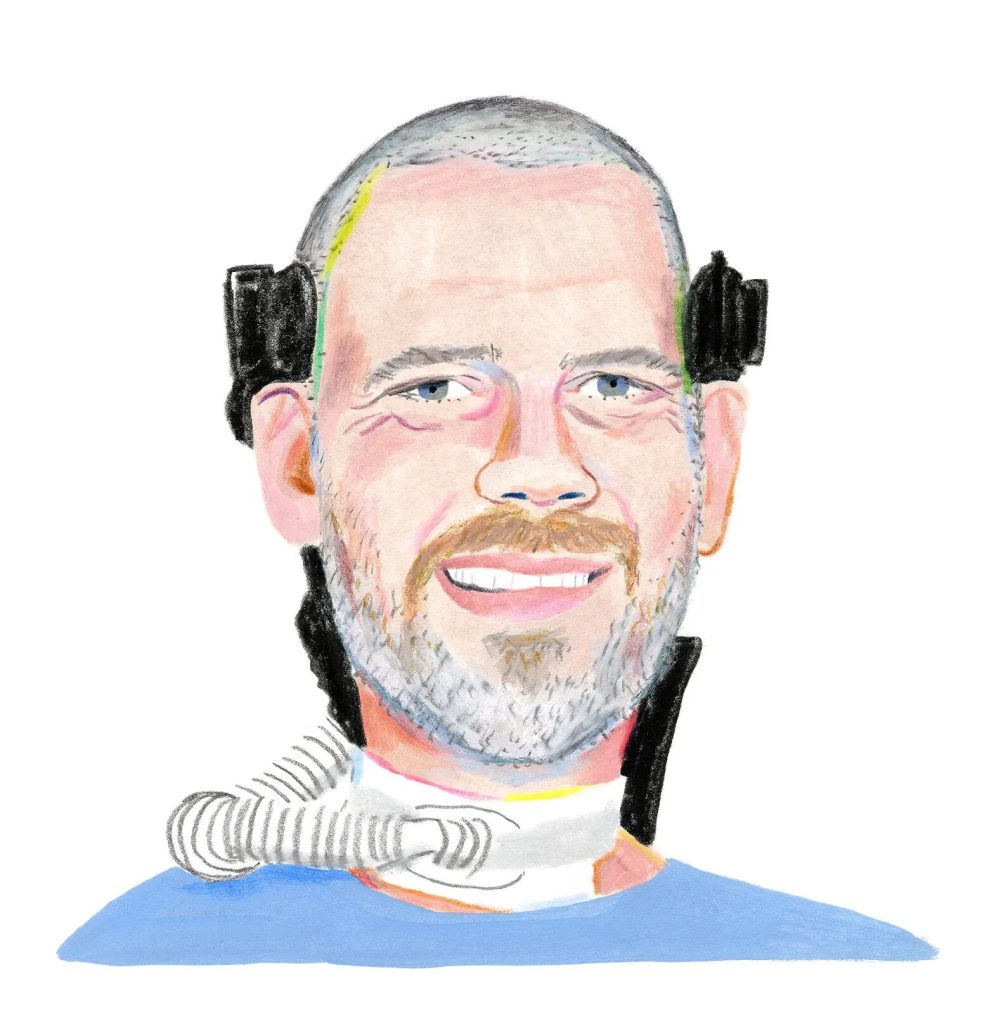
28 April 2024 – I do not know what a life is without a future, where every day could be your last day. Where you’ve lost your job and your dreams. Where you have lived in a war that tears families apart, losing your relatives, your friends, your home. Where you have been robbed of your sense of security. To witness the destruction of your country and destruction of your cultural heritage, the destruction of all life.
That is the story of Ukraine and Palestine at the moment. And Afghanistan. And Darfur. And Ethiopia. And Haiti. And Sudan. And Syria. And Yemen. And in so, so many places. I have lost count. The dystopian sameness overwhelms our news feed.
So every week I scan my science and technology news feeds for something good, something inspiring. Earlier this week I shared the story about the NASA engineers who revived Voyager 1, a satellite launched in 1977, through a process that required moving and repairing computer software code (created in 1971/1972) on the satellite via communication signals … signals sent an exponential distance outside our solar system. You can read that mind blowing story by clicking here.
But this weekend, something different. Earlier today I finished Steve Gleason’s book “A Life Impossible“, subtitled “Living with ALS: Finding Peace and Wisdom Within a Fragile Existence”. It is due for public release this week, but I had received a review copy some weeks ago.
As I noted above, I do not know what a life is without a future, where every day could be your last day. Neither do I know what it is like to be inside a person’s mind once a body has abandoned it. This book caused me to abandon many of my long-held notions of human limitations.
First, a few things about Gleason and the book, followed by some snippets of an interview with him, and then a brief review of the technology he uses to survive – and write.
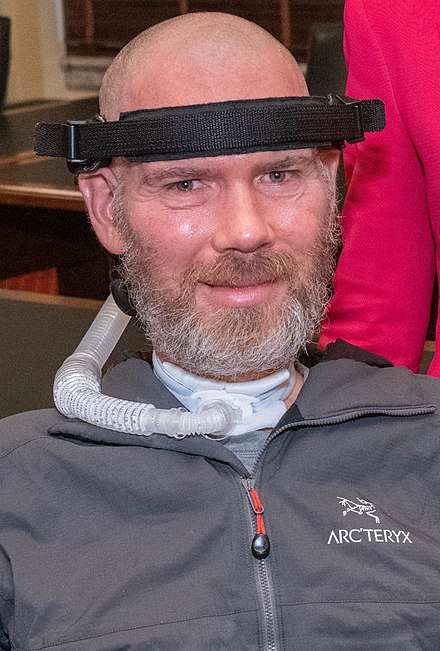
Great books change a reader. Maybe they transport readers to unexamined places – such, as I noted above, going inside a person’s mind once a body has abandoned it. Or maybe they cause readers to abandon long-held notions of human limitations.
Former U.S. National League football player Steve Gleason has written a powerful, inspiring memoir of love, heartbreak, resilience, family, and remarkable triumph in the face of ALS. And the sometime brilliance of technology.
In 2011, three years after leaving the NFL, Steve Gleason was diagnosed with ALS, a terminal disease that takes away the ability to move, talk, and breathe. Doctors gave him 3 years to live. He was thirty-three years old. As Steve says, he is now ten years past his expiration date.
His memoir is the chronicle of a remarkable life, one filled with optimism and joy, despite the trauma and pain and despair he has experienced. Writing using eye-tracking technology, Gleason covers his pre-ALS life through the highs and lows of his NFL career with the New Orleans Saints, where he made one of the most memorable plays in Saints history, leading to a victory in the first post-Katrina home game, uplifting the city, making him a hero, and reflected in a nine-foot bronze statue outside the Superdome.
Then came his heartbreaking diagnosis. Gleason lost all muscle function, and now uses Stephen Hawking-like technology (explained below) to communicate, and breathes with the help of a ventilator. This book captures Gleason and his wife Michel’s unmatched resilience as they reinvent their lives, refuse to succumb to despair, and face his disease realistically and existentially.
This unsparing portrait argues that a person’s true strength does not reside solely in one’s body but also in the ability to face unfathomable adversity and still be able to love and treasure life.
There is a lot I can share from the book but I want to share an interview he did last week which captures much of the spirit of the book.
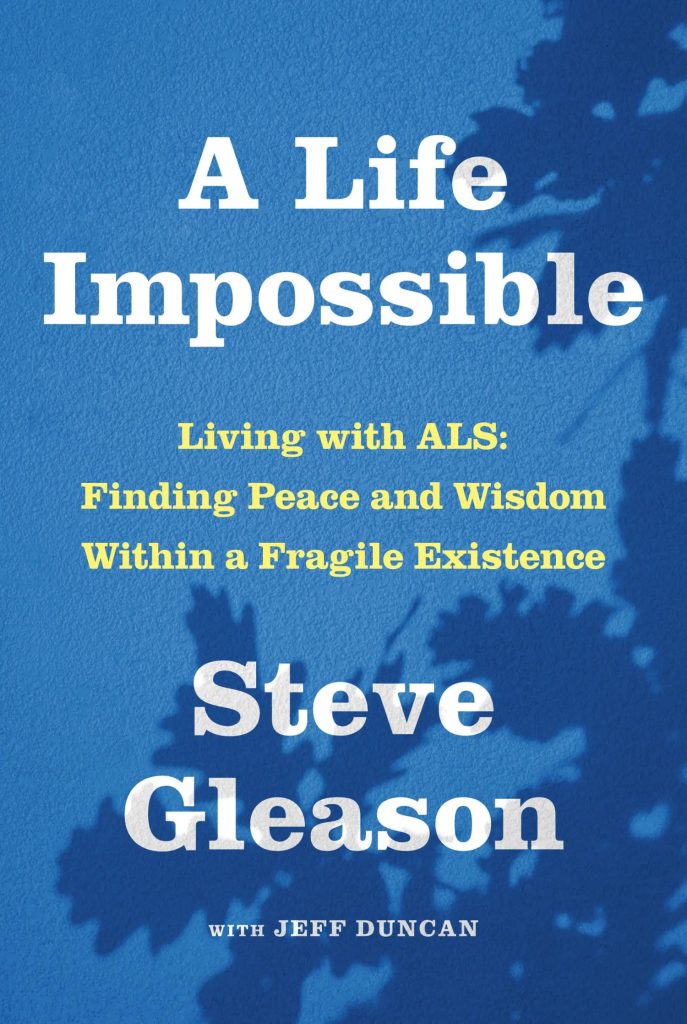
Letter by letter, Steve Gleason typed his memoir with his eyes. Sharing “the most lacerating and vulnerable times” in his book was worth the physical and emotional toll, he says.
Describe your ideal reading experience (when, where, what, how).
I have always loved to read, and I read nearly anywhere. Journalists used to get a kick out of the fact that in the midst of the chaotic joy of the New Orleans Saints locker room, I would lie on the floor reading books.
These days, while I’m not so good at flipping pages, I still tear through books. I listen on Audible, or read on Kindle, and for the books I’d like to pass on, I buy the book for the shelves in our house.
The ideal reading experience? For me, there is nothing more glorious than sitting outside under the shade of an oak tree with my wife, Michel, or our 12-year-old son, Rivers, listening on Audible or hearing them read the hard copy. Rivers and I just finished the young readers adaptation of “The Boys in the Boat,” by Daniel James Brown. Our 5-year-old daughter, Gray, is just learning to read, so I look forward to continuing this tradition in nature, my sanctuary, for many years.
What book do you turn to during hard times?
Viktor Frankl’s “Man’s Search for Meaning.” There were a couple years, as I was losing the ability to move, talk and breathe, that I felt so lonely, ashamed and weary that I was ready to give up and die. His words helped me choose life.
What did it take to write a nearly 300-page book?
In a word … everything. I type with my eyes, letter by letter, so to write this, it took a physical toll to write for several hours each day for two years. It took patience and discipline. People often talk about “writer’s block,” but I think I experienced something of the opposite thousands of times over the past couple years. Ordinary writers may have a wonderful idea to get on the page, then they quickly write it down. But I type so slowly that the wonderful idea that was so vivid and clear eventually slipped into the fog as I trudged and typed.
It also took an emotional toll. To relive the most lacerating and vulnerable times of my life, then to share those experiences in a raw, truthful human way, rather than a heroic way, took an extraordinary amount of trust. It’s clear to me that sharing our shortcomings and weaknesses with each other is our greatest strength. Our salvation.
Why do you describe yourself as afraid to finish it?
There were multiple reasons. Unlike most authors, I’m not able to quickly scroll through a chapter to revise or edit. I have bragged on social media, “I get more done in one day than most people get done in 15 minutes!” So, during the end of the writing process, there was fear that I would lose the input I needed to tell our story fully and truthfully.
Michel and I took some enormous risks in openly and transparently sharing our journey as a couple enduring the dark traumas of life with A.L.S. When you read the searing experience that we have been through, you may feel kind of like you’re overhearing conversations that you shouldn’t be hearing. But these difficult, truthful and compassionate conversations were our redemption, and our healing. I also took some personal risks in sharing my fairly unconventional views on religion and spirituality.
I think the most frightening aspect may be that once published, my life story would become solid, static and fixed. That is so crazy to me, because, as a lifelong explorer, my perspectives, philosophical outlooks, and beliefs are dynamic and fluid.
Galleys for your book opened with a quote from Shakespeare, “Tears water our growth.” How did you come across it? Why that quote?
I know this will come as a shock, but not everything I read on the internet is true! While this quote was attributed to Shakespeare, we did a little digging and there is no record of him ever saying or writing this, even though it’s constantly attributed to him. Although, in “As You Like It,” he does write: “Sweet are the uses of adversity. …” The quote is now attributed to Author Unknown.
What kind of reader were you as a child? Do any childhood books and authors stick with you?
My mom was a language arts teacher, so she would read to me nearly every night and I was a voracious reader growing up. The book that stands out from my youth is “Ender’s Game,” a novel by Orson Scott Card. In sixth grade I found this book in the Bookmobile, a big yellow van that I remember with great nostalgia. I can’t say exactly why, but I also read it a couple years after I was diagnosed with A.L.S.
I sense that in both my adolescence and the crazy unknowns of life where I was losing the ability to move, talk and breathe, I resonated with two themes in “Ender’s Game” — feeling isolation, and working to discover my own identity.
I’m reminded of a profound truth in a quote from Ender: “In the moment when I truly understand my enemy, understand him well enough to defeat him, then in that very moment I also love him.” In embracing this paradox, I find strength and compassion in the midst of adversity.
What book has had the greatest impact on you?
Wow, this is an impossible question to answer, but I enjoy dancing with the impossible. It would be “21 Lessons for the 21st Century,” by Yuval Noah Harari. I read this in early 2019, my ninth season with A.L.S. In “21 Lessons,” Harari explores the profound challenges facing humanity, including technological disruption, political polarization and existential risks. With such rapid change, life will become ever more chaotic.
Harari mentions multiple times that the realest thing in the world is suffering. He goes on to say that suffering is a product of patterns in our own minds, and offers a tool that has helped him alleviate suffering and be more resilient — meditation. I now train my mind in meditation for two to three hours a day. I didn’t realize it then, but as I started meditation, I was embarking on a practice of a lifetime.
What’s the last great book you read?
When I was diagnosed, one of the first questions I asked in a journal entry was, “Can I discover peace of mind, even if this disease destroys my body?” That inquiry has been a guiding light for me the past 13 years. “The Good Life: Lessons From the World’s Longest Scientific Study of Happiness,” by Robert Waldinger and Marc Schulz, has real-life stories I could relate to, providing insights which have helped illuminate the path for me to live longer, and be grateful and content.
The last book that made you cry?
“I Wish for You,” by David Wax and illustrated by Brett Blumenthal. During spring break, as our daughter nestled beside me in bed, our caregiver, Jenni, read from the book. It lists about a dozen of the most important character traits and values that I aspire to embody and instill in our kids. Witnessing Gray following along with her tiny finger, I was overwhelmed by the miraculousness of the moment. Despite being 10 years past my expiration date, here I was, sharing a cherished reading experience.
The technology used by Gleason
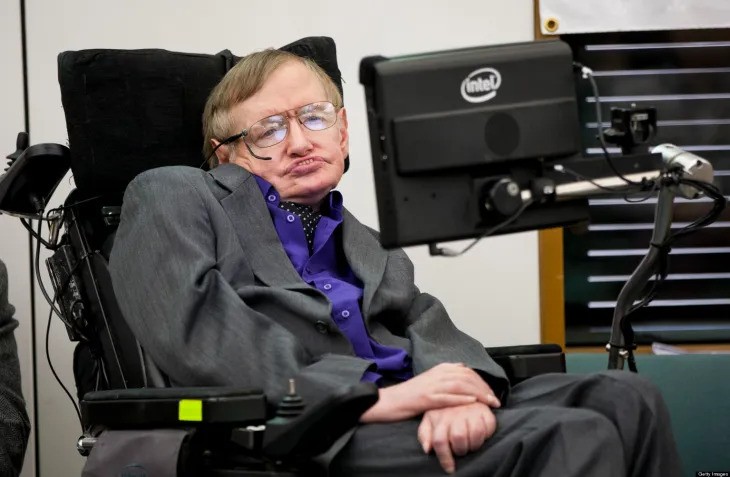
Dr. Stephen Hawking is considered to be a case study on using technology to communicate with the world. Almost all of the technology used by Gleason was developed for Hawking, and it has gone through multiple generations of improvement.
Hawking was born in England in 1942 and lived a good portion of his life without a disability. He studied math and physics and earned a PhD in physics.
While in graduate school, at age 21, Dr. Hawking was diagnosed with Amyotrophic Lateral Sclerosis (ALS), commonly referred to in the U.S. as Lou Gehrig’s disease. As ALS progresses, the degeneration of motor neurons in the brain interfere with messages to muscles in the body. Eventually, muscles atrophy and voluntary control of muscles is lost. People with ALS typically maintain intelligence, memory, and personality, even in late stages of the disease.
Hawking became a professor at the University of Cambridge in England. Although his life was expected by some physicians to be short, he died at the age of 76 after living for more than 50 years with ALS. He published many articles and several books on theoretical physics and the Big Bang theory. His most popular book, A Brief History of Time, was published in 1988.
As a result of ALS Hawking received assistance for most movement and was unable to speak without the aid of a computer. This presented a problem because as a researcher and scientist Hawking was regularly asked to speak at meetings and conferences and had to develop and publish new ideas to maintain a place in the forefront of academia.
Hawking used assistive technology to compensate for mobility and speech difficulties, the technology developed by Apple, Intel and Microsoft.
Note to readers: Gordon Moore, the cofounder of Intel, met Hawking at a conference in 1997. Moore noticed that Hawking’s computer, which he used to communicate, had an AMD processor and he asked Hawking if he preferred instead a “real computer” with an Intel micro-processor. Intel provided Hawking with customized PCs and technical support since then, replacing his computer every two years, and does the same with Gleason.
Hawking used a thumb switch and a blink-switch attached to his glasses to control his computer – developed by Apple and Microsoft. It is the same process used by Gleason to write his book. By squeezing his cheek muscles and “blinking” an infra-red switch was activated and he was able to scan and select characters on the screen in order to compose speeches, surf the Internet, send e-mail and “speak” through a voice synthesizer, as Gleason does.
But Hawking continued to be active in his research and personal life because he developed effective strategies for personal care, speaking, writing, and research activities that compensated for functional limitations imposed by ALS. Gleason has said he learned much from Hawking and his family.
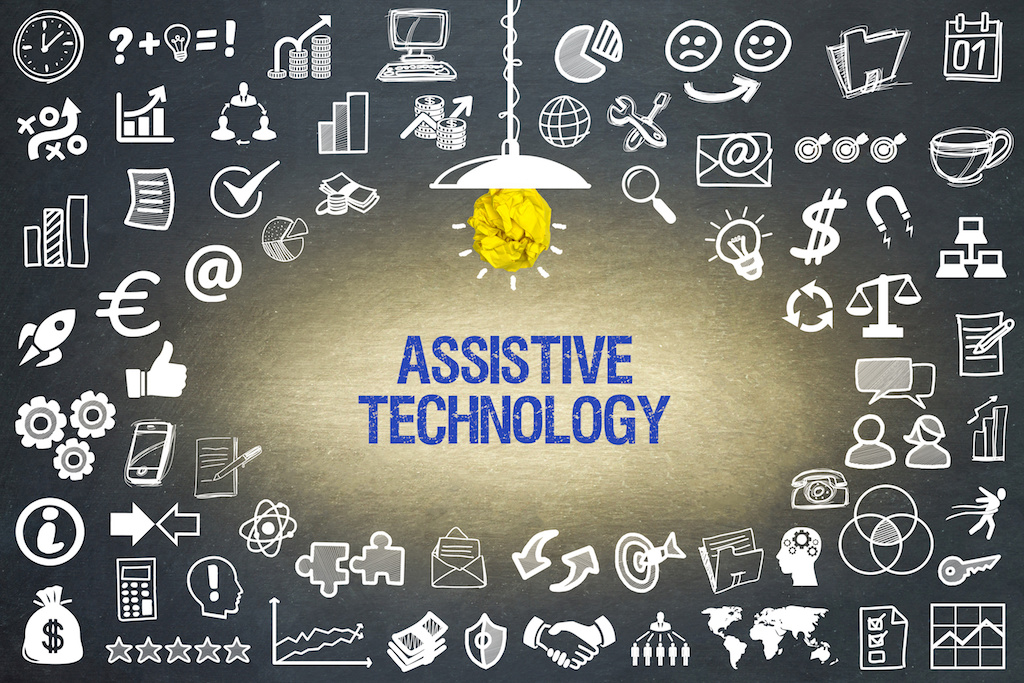
It is said that Stephen Hawking became an “accidental ambassador” for assistive technologies. The great explainer of the universe lived in a time when researchers rapidly developed technology to assist people with physical limitations in achieving increased independence, and they were eager to help Hawking.
But imagine you’ve contemplated the great scientific theories of the past and arrived at new insights based on your own observations. Imagine you’ve organized these thoughts into compelling arguments. Imagine that what you have to say will likely advance humanity’s understanding of its existence.
Now imagine your frustration if you were unable to use your physical voice or hands to speak or write the thoughts coalescing in your mind.
Such was the situation for Stephen Hawking, the great explainer of the universe.
So fortunately, Hawking lived in a time when researchers were rapidly developing electronic technology to assist people with physical limitations in achieving increased independence.
I cannot detail all I learned about assistive technologies. But one fascinating bit comes from the U.S. at Montana’s University Center for Excellence on Developmental Disabilities, where they investigate and promote services and supports that increase quality of life, independence and integration of people with disabilities. For them, Hawking became a valuable role model for more than the next generation of scientists. And they helped to develop his recognizable wheelchair and computer-generated voice, demonstrating the value of technological solutions to liberating the voice of those with physical and communication disabilities.
Assistive technologies provide a means for people to move from place to place, to eat independently, to see and hear what they can’t otherwise perceive. They include basic things like wheelchairs to help people move around, magnifiers that increase the size of text or images to make them easier to see, even nonelectronic items like large-handled kitchen utensils that are easier to hold; think about everyday things in your kitchen drawers such as can openers, spoons, spatulas and the like.
Assistive technologies range from the seemingly simple all the way to speech-generating devices (SGD) that provide a physical voice to those who don’t have one. Stephen Hawking’s SGD system combined relatively simple technology together in a unique and functional way. In his own words Hawking described how he managed a tablet computer with an infrared switch that he controlled with cheek movements:
“[An open source program] provides a software keyboard on the screen. A cursor automatically scans across this keyboard by row or by column. I can select a character by moving my cheek to stop the cursor. My cheek movement is detected by an infrared switch that is mounted on my spectacles. This switch is my only interface with the computer. [The open source program] includes a word prediction algorithm … so I usually only have to type the first couple of characters before I can select the whole word. When I have built up a sentence, I can send it to my speech synthesizer. … I can also control the mouse in Windows. This allows me to operate my whole computer. I can check my email… surf the internet … or write lectures. My latest computer … contains a webcam which I use with Skype.”
Among his many accomplishments, one that might not be readily apparent was Hawking’s role as a “spokesmodel” for the use of assistive technologies. In a way, he was like a brand ambassador – a person who made the connection between consumers and products. He demonstrated throughout his adult life that technology was simply a tool that enabled him, and others like him, to fully participate and contribute to the world around him. Rather than one particular keyboard or software system, the “product” that Hawking promoted was the concept that physical limitation cannot hamper the human mind.
Tech solutions, all of which are part of everyday 21st-century life, are used to overcome physical limitations imposed by functional disabilities. From complex solutions used by well-known people – such as the late Christopher Reeve’s use of a high-tech wheelchair – to simpler ones like screen magnifiers on our computers and speech recognition “voice commands” on our smartphones, technology makes some tasks easier. In a very public way, Hawking demonstrated that it is OK – maybe even somewhat cool. to use technology to enhance or enable communication, to move around, work, play and fully participate in family and professional activities.
Hawking and other high-profile users show the world that technology is not strange, nor does it diminish or magnify them as human beings. The technology they use allows others to look past disability and focus their attention on who they are, on them as people. And Hawking’s fame raised the visibility of speech-generating technologies, helping them seem more commonplace than weird for people all over the world—both those who might need SGDs and those who might encounter others using them to communicate.
Advances in technology that help us interact with the world around us are limited only by our imagination. We now take for granted that we can ask our smartphone questions, that it can guide us to our next appointment, monitor our heart rate, measure our steps, help us find and communicate with others, and on and on. Smart technologies are being incorporated into our kitchen appliances, shoes, vehicles and eyeglasses. These and the world of robotics stretch our thinking about ways in which technology can enhance human independence, regardless of physical, and sometimes cognitive, limitations.
How these advances will benefit people with disabilities remains to be seen. One thing is certain though. The use of assistive technologies in our everyday world diminishes the differences between people with different abilities. We owe much to Professor Hawking’s example.
Both Hawking and Gleason experiences illustrate the following:
• People can acquire a disability status at any age, from birth to advanced years.
• Accommodations change over time for those with degenerative conditions.
• Assistive technology can compensate for limitations relative to mobility and speech.
• Having a disability does not exclude people from discovering and pursuing their passions in life.